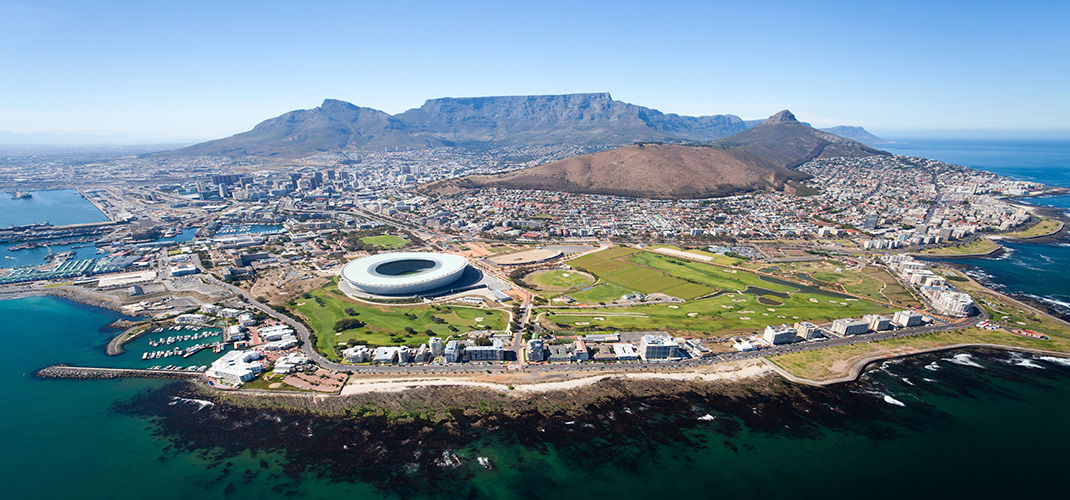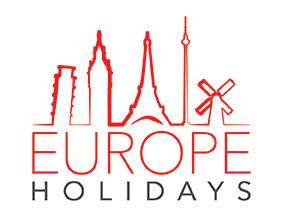Cape Town

Cape Town has something for everyone, situated between the mountains and the sea. The beauty of its natural location really cannot be overstated, with the iconic Table Mountain to the rugged coastline to Cape Point, part of a UNESCO World Heritage Site, scenic drives and pristine beaches. On Robben Island, history buffs can see where Nelson Mandela was incarcerated for 18 years and in the hinterland, elegant Stellenbosch is a paradise for foodies.
Table Mountain has to be one of the most impressive backdrops to Cape Town. Circled within South Africa’s most visited National Park, its slopes are draped in indigenous fynbos flora including stunning proteas. Large numbers of birds of prey keep watch while using the thermals to rise up the mountain’s sides. Table Mountain is also a visitor favourite with hikers, reaching the summit via the strenuous Platteklip Gorge. However, for those who cannot hike there is the Table Mountain Cableway lifts. The 1,000 metre peak tops out at Maclear’s Beacon, where the viewpoint provide endless panoramas over the city below.
From the top of Table Mountain, Robben Island is visible as a small oval island. It became the place for authorities over centuries to exile their most troublesome prisoners. From 1964 until 1982, this included Nobel Peace Prize winner and future South African President, Nelson Mandela. Incarcerated for treason against South Africa’s apartheid state, the island then became a tourist attraction in the 1990’s. There are tours to the island that include Mandela’s cell and the quarry where he was forced to break rocks by hand.
The Victoria and Alfred Waterfront is one of the newer attractions in Cape Town, It is a mixture of modern indoor shopping malls and open-air dining and cafés. You will also find the Cape Wheel here, which gives you the magnificent views over Cape Town and Table Mountain.
Signal Hill is situated on one side of Table Mountain, the site of the noon gun, which fires most days at midday. The guns themselves date back to 1794, making them the world’s oldest guns in routine use. The hill also makes for a great alternative to hiking Table Mountain. At the top, visitors can find a handful of street food vendors, alongside places to rent mats to watch the sunset.
Bo-Kaap is colourful and one of Cape Town’s most unique neighbourhoods. Located at the base of Signal Hill, it’s just five minutes from the centre of Cape Town. Bo-Kaap is a fusion of Cape Dutch and Georgian architecture and the neighbourhood’s structures took on their bold colours as a celebration of freedom from slavery. Wale Street contains the district’s oldest building, now containing the Bo-Kaap Museum.
Kirstenbosch Botanical Gardens houses some of South Africa’s most unique plant species. Situated on the eastern slopes of Table Mountain it is a playground within Cape Town’s city limits. Attractions include part of a wild almond hedge planted by South Africa’s first coloniser, Jan van Riebeek. More modern editions to the garden include the Boomslang Canopy Walkway, which was named after the deadly South African snake, it winds its way through Kirstenbosch’s Arboretum. Stretching for 130 metres, it provides intimate views of the gardens, alongside Cape Flats township and the mountains.
If you wish to observe Africa’s only mainland dwelling Penguins, then head to Boulders Beach located near Simon’s Town. The beach unexpectedly became the home for African Penguins in 1982. Since then, the small colony has continued to grow to around 3000 individual birds. Wooden boardwalks have been built for visitors to get the best views of them.
Bree Street is acclaimed as Cape Town’s trendiest address. Originally it was made wide so Ox carts had a chance to turn around. Today, it is full of street art, including some incredible full building murals. A place to hang out when you are after a relaxing afternoon, there are no shortage of cafés and bars.
Cape Town and vineyards go hand in hand and have done since the very foundation of the city. Understandably, most of the big names in wine region are located outside of the city, in towns including Stellenbosch, Franschhoek, Wellington and Paarl. There are plenty of organised tours that will take in the winelands in each of these regions.
The South African National Gallery houses a permanent collection on European culture with artworks predominantly from Britain, France and the Netherlands. In recent years the gallery has used its temporary exhibitions to highlight contemporary works, creating a fascinating mixture of styles. Some of the artists to have collections here include Abraham van Beerstraten and Thomas Baines, known for his drawings of colonial South Africa. Among its sculpture is The Butcher Boys, created by highly respected South African artist Jane Alexander.
Zeitz MOCAA is another new addition to the Cape Town skyline. The Zeitz Museum of Contemporary Art Africa was unveiled to the world in 2017, from a nine floor converted grain silo it has become the largest gallery to African contemporary art anywhere in the world. Boosted by an impressive series of rotating temporary exhibitions and fine permanent exhibits.
Other museums worth visiting include the Iziko South African Museum housing collections ranging from Zoology to Archaeology. Covering four floors, exhibits include the world renowned Lydenburg Heads, some of the oldest Iron Age artworks found in South Africa. The District Six Museum is another link to South Africa’s past of racial discrimination, the District Six Museum tells the tale of a single Cape Town neighbourhood. Once multiracial, the apartheid authorities forced the rehousing of 60,000 non-white residents. What’s unique about this museum is its focus on individuals. This makes it an important part of any Cape Town tour, even for people who have already uncovered some of the city’s apartheid past.
